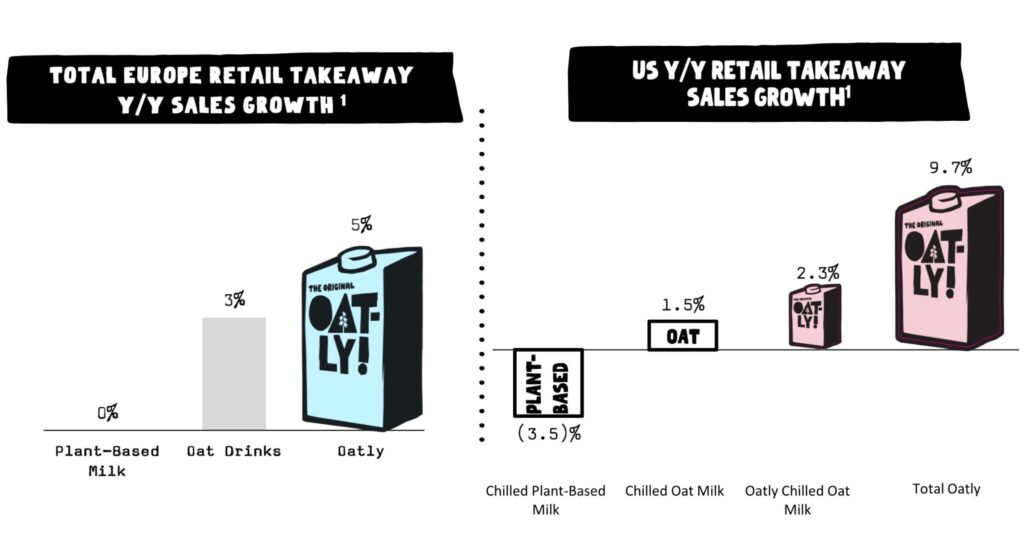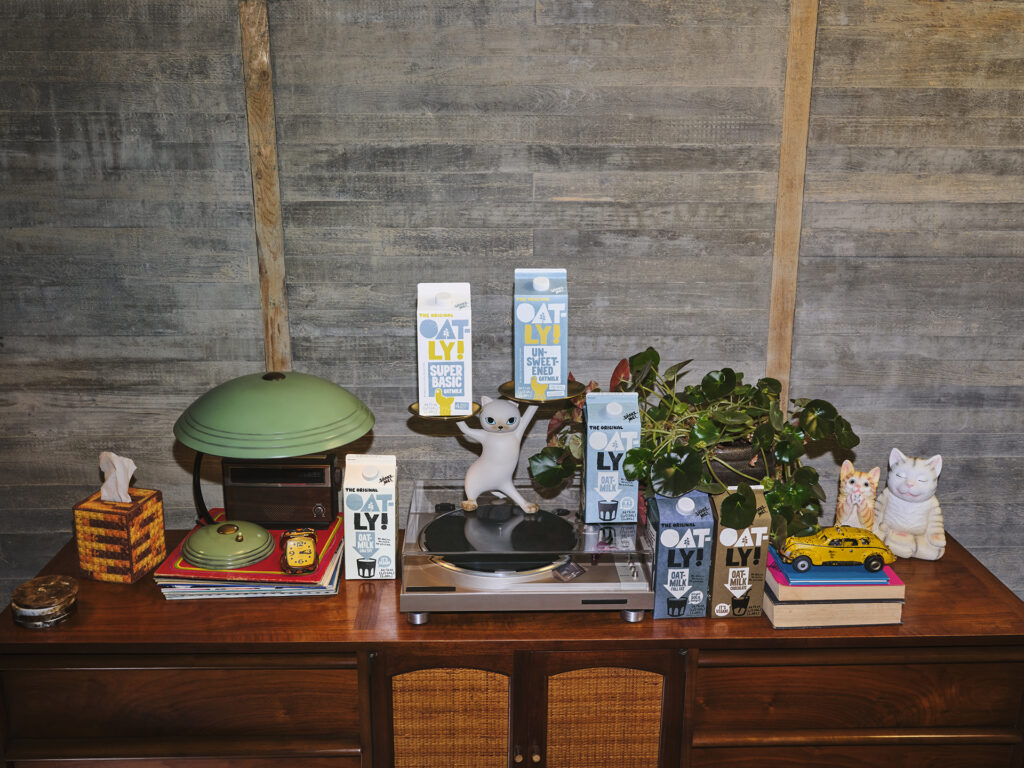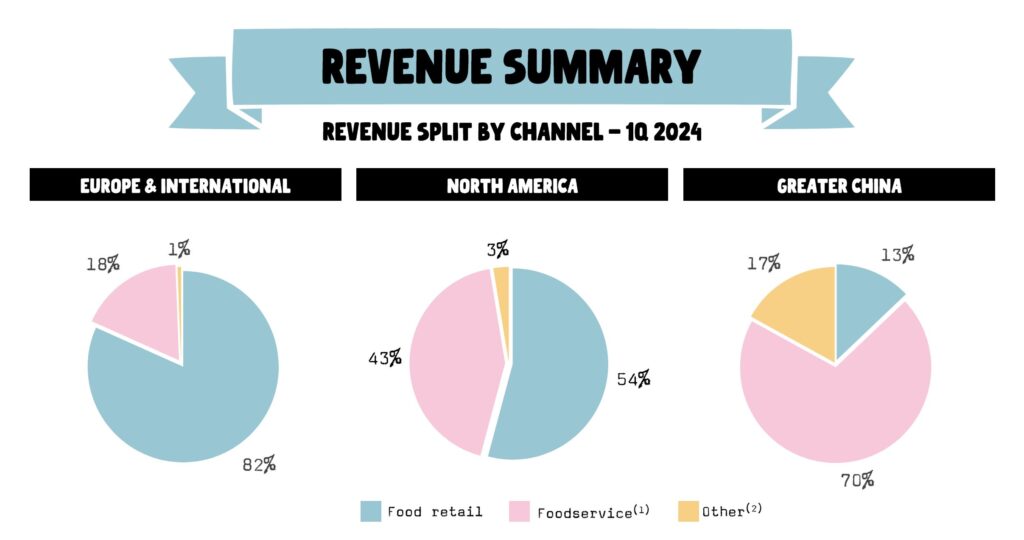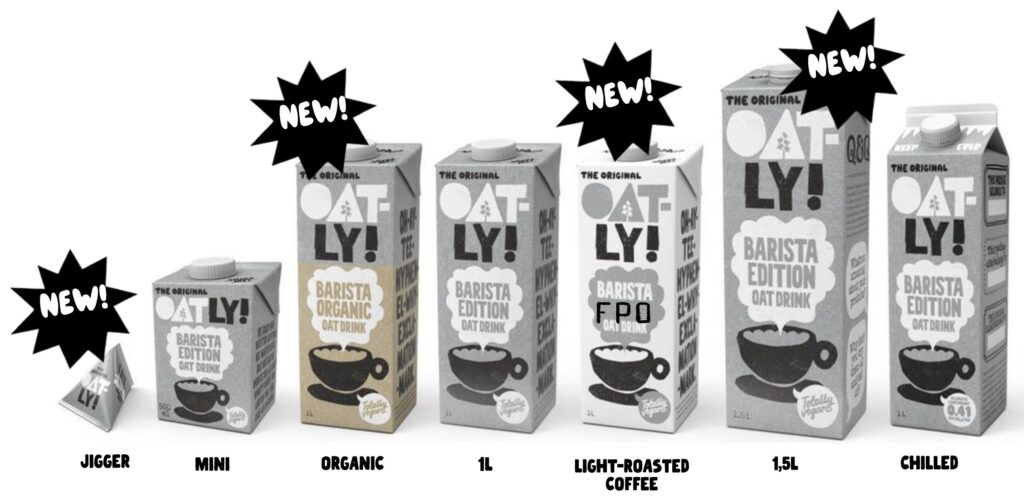6 Mins Read
After taking measures to turn its losses around, Oatly’s quarterly losses have narrowed by 39% from the previous year, and revenue swelled by 1.8% in a performance exceeding analysts’ expectations.
A strategic reset in China, expanded focus on retail and tailored pricing for specific markets have led to what Oatly CEO Jean-Christophe Flatin described as a “solid quarter”.
The company reined in its operating and capital expenditures, and increased its gross margin to 27 cents on the dollar (up by 56% from Q1 2023). It also netted $199.1M in revenue this quarter, a 1.8% improvement from the previous year. This – combined with 10% lower selling prices – took its year-over-year gross profit to $53.8M (a 58% increase).
It means that after posting a 6.5% increase in annual losses last year – when a pullback from manufacturing facilities resulted in large one-off costs – the Swedish oat milk giant has managed to shrink its Q1 losses down from $75.5M in 2023 to $45.8M in 2024. This was led by a decrease in expenses from multiple activities, including “employee-related expenses”, consultant fees and R&D spend.
“The year is off to a good start,” Flatin said in an earnings call. “We are clearly seeing the benefits from the bold actions we have taken over the past two years.”
These actions included its streamlined “asset-light strategy”, which involved the elimination of poor-performing SKUs in China, and its Go Blue plan to expand the applications and range of its products, all geared towards its “North Star” goal of reaching profitability. “Every employee throughout the organisation – no matter their position, region or role – is squarely focused on strengthening the business and bringing us to structural consistent, profitable growth,” said Flatin.
Oatly outperforms entire plant-based milk category

To recalibrate its strategy and decision-making, Oatly has shaken up its operating segments, with Greater China now managed separately from the rest of Asia Pacific, which has joined the Europe, Middle East and Africa regions in a new Europe & International section (this also includes Latin America).
As is to be expected, Europe & International is the oat milk maker’s largest market, accounting for 55% of its revenue. Here, its revenue increased by nearly 8% over Q1 2023, which was driven by increased volume, price hikes and a 20% revenue growth in foodservice. The company has also introduced new SKUs, such as the 20ml single-use Jigger packs, the zero-sugar oat milk, and its new line of yoghurts.
“We are placing advertisements in high-traffic areas, such as European train stations, and we are creating great tasting experiences and various trade events and coffee festivals,” explained Flatin.

Retail remains the dominant channel in Europe, accounting for 82% of its sales (versus 80% in all of last year). Its retail revenue increases of 5% have outpaced the entire plant-based milk category, which has flatlined, as well as the oat milk segment as a whole (3%).
Likewise, retail has encroached upon the foodservice share in North America. While the latter was the slightly stronger segment in the full year of 2023, it has now given way to retail, which makes up 54% of Oatly’s North American business. Here, too, its retail takeaway sales have thoroughly outperformed its counterparts. While chilled plant-based milk witnessed a 3.5% decline and chilled oat milk saw a modest 1.5% hike, chilled Oatly was up by 2.3%. When accounting for its ambient SKUs too, its revenue in this channel was 9.7% higher year-over-year.
This is partly thanks to its new Super Basic and Unsweetened oat milk SKUs and four-strong line of coffee creamers, as well as the partnership with Minor League Baseball. It means North America now makes up 34% of Oatly’s revenues.

Globally, retail accounted for 65% of Oatly’s Q1 2024 revenue, and foodservice took a 32% share, with the remaining coming mainly from e-commerce. “Every city in which we land the Oatly brand proves the magic of the brand and how prepared these markets are to welcome us with open arms,” noted Flatin. “Whether it’s a barista in specialty coffee or it’s a customer buyer, we repeatedly get the: “Finally, you guys are here!'”
China reset on-track
If Europe & International and North America gained, something had to give. That was Greater China, which includes Hong Kong and Taiwan and drove 11% of Oatly’s Q1 sales this year.
This was expected, given the business’ struggles in China, where it withdrew low-margin SKUs from retail and e-commerce and amped up its foodservice focus, which is responsible for 70% of its sales in the region (rising from 65% this time last year). E-commerce is also much bigger here than elsewhere, taking up 13% of the market share.

Greater China offset the sales growth Oatly experienced elsewhere, with revenue down by 27% compared to Q1 2023. However, when discounting non-recurring costs – also known as adjusted EBITDA – performance in this region improved, with losses plummeting by 80% from the first quarter of last year to $3.4M. Even when contrasting this with the previous quarter, this figure was down by 64%.
This was attributed to lower selling costs and general expenses, as well as much greater gross profit. As part of its growth strategy in Greater China, Oatly has patrnerd with the country’s largest coffee chain on a limited-time Earth Day promotion, which it says will boost category momentum and brand visibility. It has also launched value-priced products with several customers that are performing well – this includes its pistachio-oat milk, which boasts 4.2g of omega-3 fatty acids per pack.

“Sensitive to the economic context prevailing in China and the new consumer behaviour, it was clear we needed to complement our portfolio with SKUs that could hit certain price points,” said COO Daniel Ordonez. “This helps us to build a stronger service package for our customers, drive volume growth to sustain necessary levels of capacity absorption, and hence, solidify our margins.”
“The consumer environment in Greater China remains challenging. However, we are identifying opportunities to rebuild our business in a disciplined manner,” he added. “While it is clear we have not yet gained the traction needed for this business to capture the full opportunity that region provides, you can see we’re starting to make progress on the second stage of this segment’s turnaround plan.”
Oatly reiterates 2024 guidance and teases new barista milks

To further capture consumer share, Oatly highlighted the impending launch of its new barista milks, which now feature an organic version, a variant for light-roasted coffee, and a 1.5L pack. “We conquer the hearts and the minds of coffee specialty first, then we expand experiences in foodservice but in a selective manner, balancing margin and growth, while we make ourselves available in retail,” explained Flatin.
The company remains pragmatic about the upcoming year, reiterating its full-year outlook of revenue growth by 5-10%, adjusted EBITDA loss between $35-60M (versus $158M in 2023), and capital expenditures below $75M.
“While we are encouraged by our first quarter results, we recognize that we are only one quarter through the year and that our three operating segments are in very different stages of their turnaround journeys, their maturity, their execution, and the amount of traction they have achieved on the strategic actions.”



